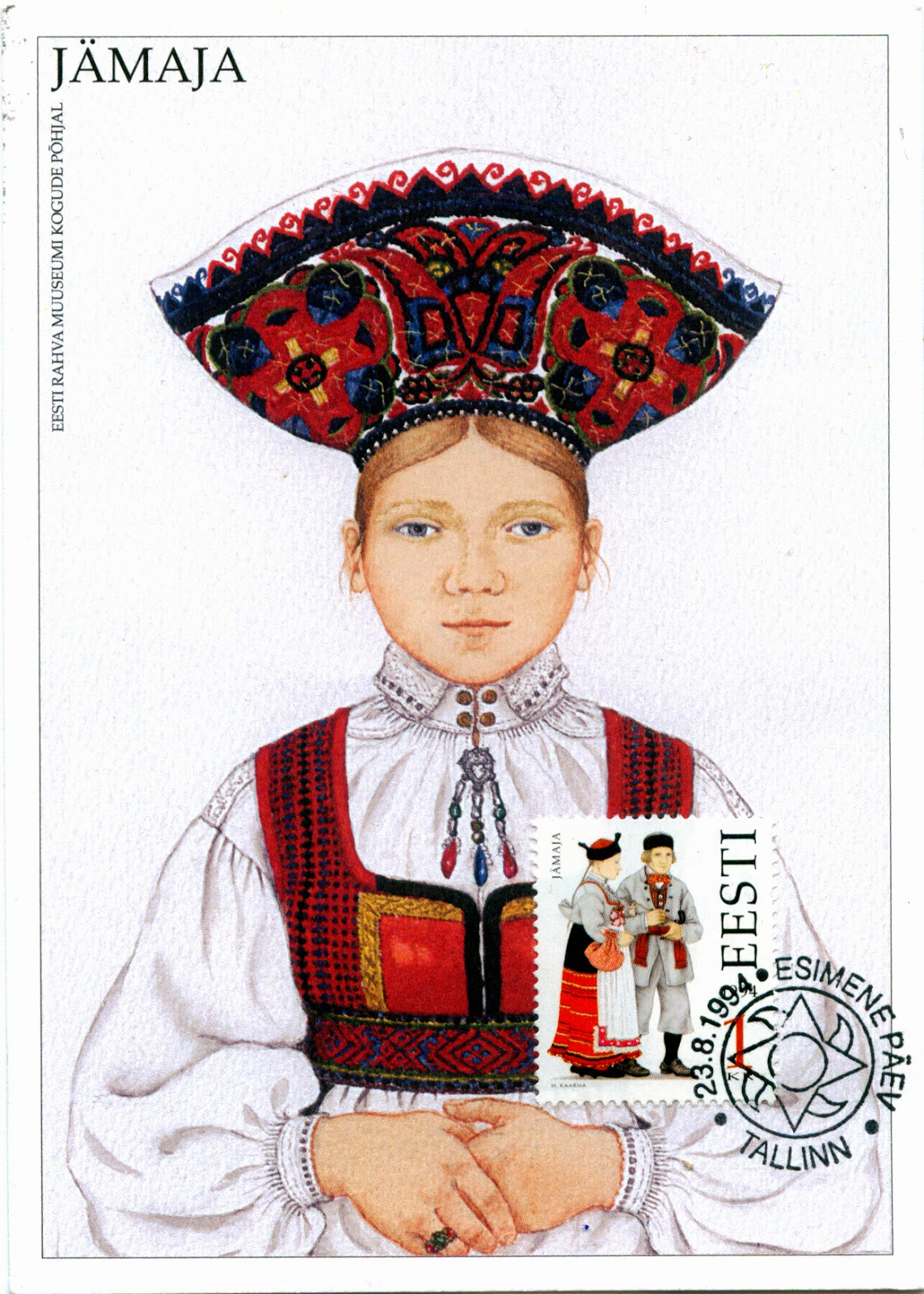February 23, 2014
1011 ESTONIA (Saare) - Traditional clothes in Jämaja
Estonians are a Finnic people and have strong ties to the Nordic countries, stemming from important cultural and religious influences gained over centuries during Scandinavian and German rule and settlement. Even so, Estonian traditional costumes have a lot in common with the ones of Latvians and Lithuanians, and are divided into four main groups, which have their origins to the ancient tribal differences: Southern, Northern, Western Estonia, and the Islands. On the other hand, as in many other ethnic groups, both everyday and festive clothing constitute a complicated system of signs, referring to the wearer’s national belonging, social status, age and marital status. Actually today each parish has its own traditional clothing, developed between 17th and 19th centuries.
Although Estonia is small, there are numerous local differences in folk costume, and the condition of serfdom in which the peasantry lived was largely responsible for the way in which local differences were formed and preserved. For example, a woman in Saaremaa who married into another parish, wore her local clothes until her death, whereas her daughters clothed themselves in garments typical of their father's parish. Traditional costume of the islands (Saaremaa, Muhumaa and Hiiumaa) differ considerably, in Saaremaa even by parishes. It has many common features with the dress of Estonian Swedes, for example the pleated skirts, pressed into folds with hot loaves of bread. In the 19th century, the earlier single-colour skirts became striped. The women wearing also shirts and bodices (sleeveless jackets, apparently an item dating from the fairly distant past), and a cloth bag to their belts, decorated lavishly with beads, galloons or appliqué. In the maxicard, the woman (from Jämaja, a village in Saaremaa), wear a disc-shaped and knitted bobble hat, I think a bridal cap.
About the stamps
The stamp on the maxicard is part of the large series Estonian Folk Costumes, issued since 1994, about which I wrote here.
The stamps on the back are part of the large series Bird of the Year, issued since 2001 (one stamp in each year):
13.05.2010 - Red-backed Shrike / Lanius collurio (5.50k / 0.35 EUR)
21.04.2011 - Barn Swallow / Hirundo rustica (0.35 EUR)
References
The colorful styles of traditional dress - The Baltic Times
Folk costume - Estonica
sender: Patrik Hierner (direct swap)
sent from Laagri (Harju / Estonia), on 02.02.2014
Etichete:
ESTONIA,
EU - EUROPE,
EU-Estonia,
Maxicards
Locaţia:
Jämaja, Saaremaa, Estonia
Subscribe to:
Post Comments (Atom)



No comments:
Post a Comment